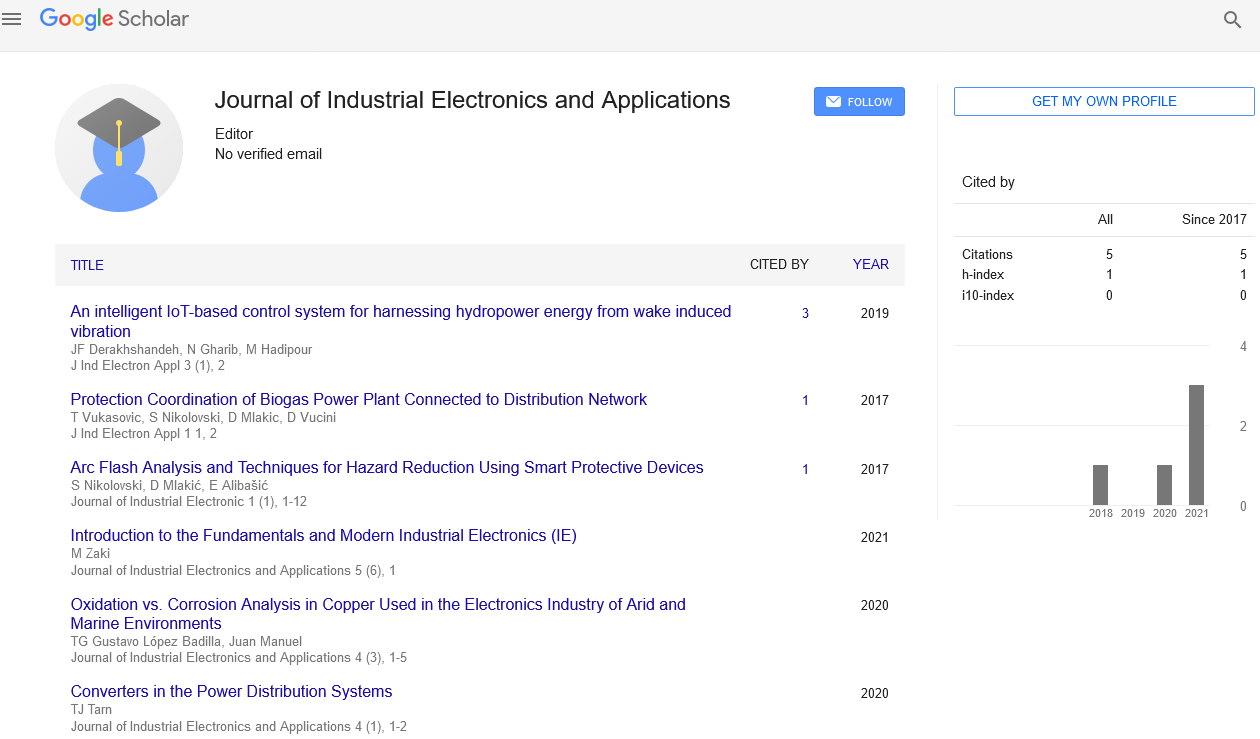Opinion Article, J Ind Electron Appl Vol: 7 Issue: 4
In-Depth Analysis of Technical Functionality and Applications of Actuators across Various Sectors
Christopher Kolhmer*
1Department of Aerospace and Mechanical Engineering, University of Southern California, Los Angeles, United States of America
*Corresponding Author: Christopher Kolhmer,
Department of Aerospace and
Mechanical Engineering, University of Southern California, Los Angeles, United
States of America
E-mail: chriskolh@usc.edu
Received date: 01 November, 2023, Manuscript No. JIEA-23-124002;
Editor assigned date: 03 November, 2023, PreQC No. JIEA-23-124002 (PQ);
Reviewed date: 20 November, 2023, QC No. JIEA-23-124002;
Revised date: 27 November, 2023, Manuscript No. JIEA-23-124002 (R);
Published date: 04 December, 2023, DOI: 10.36648/JIEA.1000043
Citation: Kolhmer C (2023) In-Depth Analysis of Technical Functionality and Applications of Actuators across Various Sectors. J Ind Electron Appl 7:4.
Abstract
Actuators, often regarded as the unsung heroes in the world of engineering and automation, play a pivotal role in converting electrical, hydraulic, or pneumatic energy into mechanical motion. These versatile devices find applications across various industries, contributing to advancements in manufacturing, robotics, aerospace, healthcare, and more.
Description
Actuators, often regarded as the unsung heroes in the world of engineering and automation, play a pivotal role in converting electrical, hydraulic, or pneumatic energy into mechanical motion. These versatile devices find applications across various industries, contributing to advancements in manufacturing, robotics, aerospace, healthcare, and more. This article explores the diverse uses of actuators, shedding light on their significance in powering a wide array of machinery and systems.
Types of actuators
Actuators come in different types, each designed for specific applications. Electric actuators utilize electrical energy and are common in precision applications. Hydraulic actuators harness the power of fluids for heavy-duty tasks, while pneumatic actuators use compressed air or gas. These variations cater to the unique demands of different industries. At their core, actuators are devices that produce mechanical movement in response to an input signal. This movement can be linear or rotary, allowing actuators to control the position, speed, and force of a system. Actuators serve as the driving force behind the movement of valves, switches, levers, and various mechanical components.
Applications in manufacturing
Actuators are the backbone of industrial robotic systems. Electric actuators, in particular, enable precise control of robotic arms and endeffectors. This is crucial in manufacturing processes such as assembly, welding, and packaging, where accuracy and repeatability are paramount. In manufacturing plants, actuators are extensively used in automated machinery. They control the movement of conveyor belts, sorting systems, and robotic arms, streamlining production processes and enhancing efficiency.
Aerospace and defense
Aircraft rely on hydraulic actuators for controlling crucial surfaces like ailerons, elevators, and rudders. The precise movement provided by actuators ensures the stability and manoeuvrability of aircraft, contributing to safe and controlled flight. Actuators play a vital role in deploying antennas, solar panels, and other critical components on satellites. Electric actuators are often preferred for their reliability and precision in space applications.
Healthcare and medical devices
Actuators are integral to medical imaging devices such as MRI machines and CT scanners. They enable precise movement and positioning of components, allowing for accurate and detailed imaging of the human body. In the field of healthcare, actuators contribute to the development of advanced prosthetics and exoskeletons. These devices utilize actuators to replicate natural movements, enhancing mobility and improving the quality of life for individuals with limb impairments.
Automotive industry
Electric actuators play a crucial role in electric power steering systems in automobiles. They assist in steering control, responding to driver inputs and enhancing the overall driving experience. Actuators are employed in brake systems for functions such as Anti-Lock Braking Systems (ABS) and Electronic Stability Control (ESC). These systems use actuators to modulate brake pressure, improving vehicle safety and stability.
Energy and environmental applications
Actuators are utilized in renewable energy systems, particularly in the control mechanisms of solar tracking systems and wind turbine pitch control. These applications optimize energy capture by aligning solar panels or adjusting the angle of wind turbine blades. Actuators are integral to water treatment processes, controlling valves and gates for the efficient distribution and regulation of water flow. This ensures the proper functioning of water treatment plants and distribution systems.
Conclusion
Actuators are unsung heroes that silently power the machinery and systems shaping our modern world. From the precision of industrial robotics to the life-changing applications in healthcare and the critical functions in aerospace, actuators are indispensable across various industries. As technology continues to advance, the role of actuators in automation, control, and optimization will only become more pronounced, contributing to increased efficiency, precision, and innovation across diverse sectors.
 Spanish
Spanish  Chinese
Chinese  Russian
Russian  German
German  French
French  Japanese
Japanese  Portuguese
Portuguese  Hindi
Hindi 